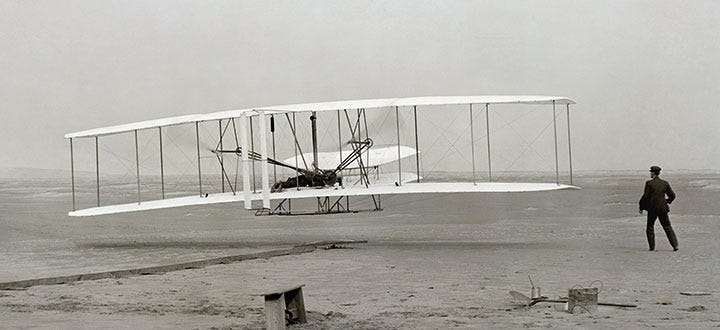The Wright Brothers, by David McCullough. New York: Simon & Schuster, 2015. 336 pp. $30 (hardcover).
David McCullough begins The Wright Brothers with some history about men who “had dreamed of taking to the sky, of soaring into the blue like the birds.”
One savant in Spain in the year 875 is known to have covered himself with feathers in the attempt. Othe…



